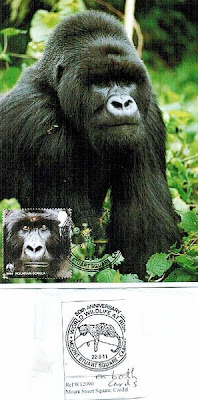Please read:
The Toilet Of The Future Will Turn Poop Into Power | Fast Company
No shit.
On a second thought...that's what's all about, and how to make it useful for mankind. :)
This a postcard from Virginia, USA.
=========
You always wanted to know HOW they DO IT in space.
No, we're not talking here about having sex in space - though I've read that a THIRD PERSON is needed. Not to "hold the candle", but to hold the "recipient", whatever that means.
We're talking here about urinating and defecating while in cosmos.
"Hygiene
The ISS does not feature a shower, although it was planned as part of the now cancelled Habitation Module. Instead, crewmembers wash using a water jet and wet wipes, with soap dispensed from a toothpaste tube-like container.
Crews are also provided with rinseless shampoo and edible toothpaste to save water.[152] These Waste and Hygiene Compartments use a fan-driven suction system similar to the Space Shuttle Waste Collection System.
Astronauts first fasten themselves to the toilet seat, which is equipped with spring-loaded restraining bars to ensure a good seal.[146] A lever operates a powerful fan and a suction hole slides open: the air stream carries the waste away.
Solid waste is collected in individual bags which are stored in an aluminium container.
Full containers are transferred to Progress spacecraft for disposal.[147][153] Liquid waste is evacuated by a hose connected to the front of the toilet, with anatomically correct "urine funnel adapters" attached to the tube so both men and women can use the same toilet.
Waste is collected and transferred to the Water Recovery System, where it is recycled back into drinking water."
=============
From npr.org/freshair:
The Worldwide 'Thirst' For Clean Drinking Water
"Las Vegas now pays residents $40,000 an acre to take out their lawns and replace them with rocks and native plants. That's much cheaper, Fishman says, than figuring out how to pump more water into the city, which takes 90 percent of its water from a lake plagued with drought issues. And, he says, by implementing stringent water usage rules — it's illegal in Las Vegas to spray a sidewalk with a sprinkler, for instance — the city has saved millions, both in dollars and in gallons.
"Las Vegas, over time, has come to recapture almost all of the water used anywhere [in the city] indoors," he says. "Although Las Vegas has what was, for a long time, the largest fountain on Earth and shark aquariums and lagoons that re-create the canals of Venice right on the strip, over the last 20 years, per-person water use in Vegas has fallen 100 gallons.""
Excerpt: 'The Big Thirst'
"The oldest rock discovered so far on Earth — in northern Quebec — is 4.28 billion years old.
That's an old rock — it's getting close to the age of the solar system itself, estimated at about 4.6 billion years.
But turn on the faucet in the bathroom to brush your teeth, and the water pouring out is probably just a bit older than Canada's old rock.
Scientists don't agree on the precise age of the water on Earth, but it's certainly 4.3 or 4.4 or 4.5 billion years old. It's one of the more astonishing things about water — all the water on Earth was delivered here when Earth was formed, or shortly thereafter.
The water around us is original equipment — it was included with the planet itself, in the first 100 million years or so. There is, in fact, no mechanism on Earth for creating or destroying large quantities of water.
What we've got is what's been here, literally, forever.
And it all arrived on Earth in exactly the form it's in now: H2O.
Water not only came from space, it was created out in space.
It is, in fact, cosmic juice, formed hundreds of millions, or even billions, of years before the solar system itself.
Once you understand the lineage of water, you realize that the ads touting Evian ("born in the French Alps") and FIJI Water ("untouched by man") dramatically understate the case."
"As the stars coalescence and collapse in on themselves, they send shock waves out through the clouds of gas, which contain lots of loose hydrogen and oxygen.
When the shock waves slam the hydrogens and oxygens into each other, they often form water. Hydrogen, for the record, is the most common element in the universe; oxygen is the third most common."















.jpg)



.png)




















